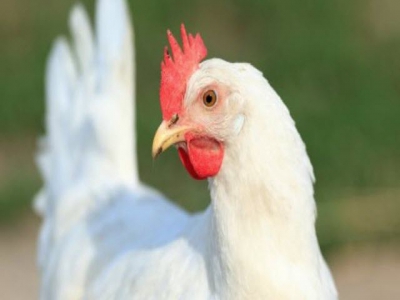Genetic architecture of survival examined in laying hens

Survival is an important welfare and economic trait in laying hens.
Mortality due to feather pecking is an important health and welfare problem in laying hens, and the Animal Breeding & and Genomics group at Wageningen University & Research (WUR) in the Netherlands, in collaboration with Hendrix Genetics, has investigated the genomic regions associated with survival time in laying hens.
Results point to genes of the GABAergic system, which supports existing evidence for the involvement of GABA in the development of abnormal behaviors.
Survival is an important welfare and economic trait in laying hens, WUR said. Feather pecking behavior is the main reason for reduced survival. Survival is a socially affected trait, because the survival time of a hen depends not only on her own ability to avoid being pecked (direct genetic effect or victim effect) but also on the pecking behavior of her group mates (social genetic effect or actor effect), the researchers said.
The WUR researchers noted that their previous studies showed that direct and social genetic effects each contribute about 50% of the total heritable variation in survival time in laying hens with intact beaks. At present, however, the researchers said they do not know the genes responsible to these direct and social genetic effects. Therefore, they aimed to identify single nucleotide polymorphisms (SNPs) associated with direct and social effects on survival time in laying hens.
Genome-wide association study
A genome-wide association study was performed using genotype and phenotype data on three crossbred White Leghorn layer lines provided by Hendrix Genetics, WUR said. Hens had intact beaks and were kept with siblings in traditional five-bird battery cages in Kitchener, Ont. SNP effects were estimated one by one, both for direct and indirect effects, the researcher said.
The researchers reported that they found several SNPs associated with direct effects on survival time but none with indirect effects. In one of the crosses, a clear direct SNP effect was found on chromosome 2, close to the GABA receptor gene (GABBR2). In another cross, the same region was associated with the social effect, although not significant. The favorable allele had a positive effect on both the survival time of the individual itself and on the survival time of its group mates, the researchers noted, adding that the GABA receptor gene plays an important role in the regulation of neurotransmitters in the brain.
Several studies have shown that GABA plays a role in physiological and behavioral stress in many species and is associated with behavioral disorders, the WUR researchers said.
Có thể bạn quan tâm
Phần mềm

Phối trộn thức ăn chăn nuôi

Pha dung dịch thủy canh

Định mức cho tôm ăn

Phối trộn phân bón NPK

Xác định tỷ lệ tôm sống

Chuyển đổi đơn vị phân bón

Xác định công suất sục khí

Chuyển đổi đơn vị tôm

Tính diện tích nhà kính

Tính thể tích ao hồ



 Poultry farm entitled to payments after bald eagle…
Poultry farm entitled to payments after bald eagle…  Organic acid, essential oil blend may boost chicken…
Organic acid, essential oil blend may boost chicken…